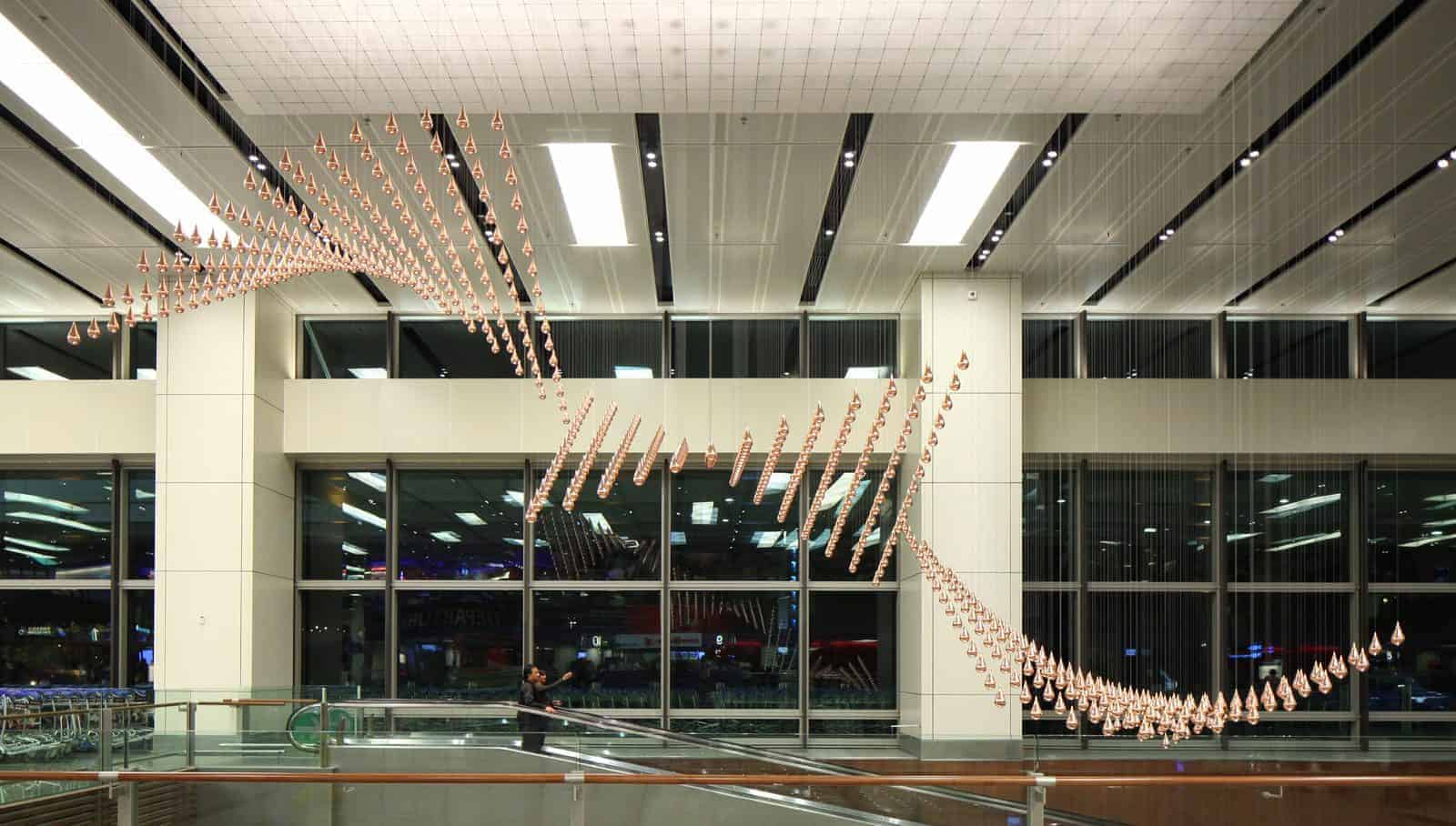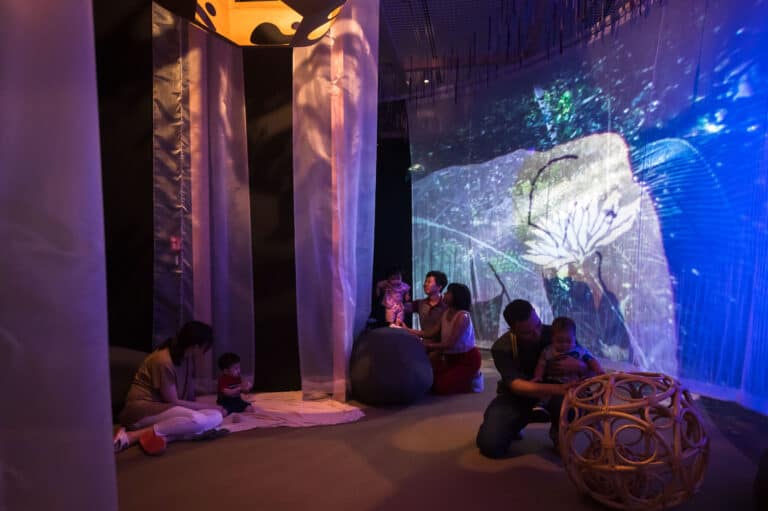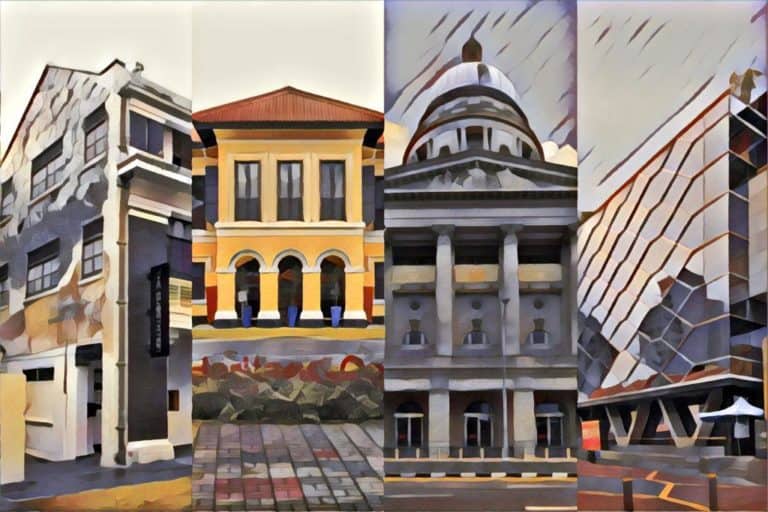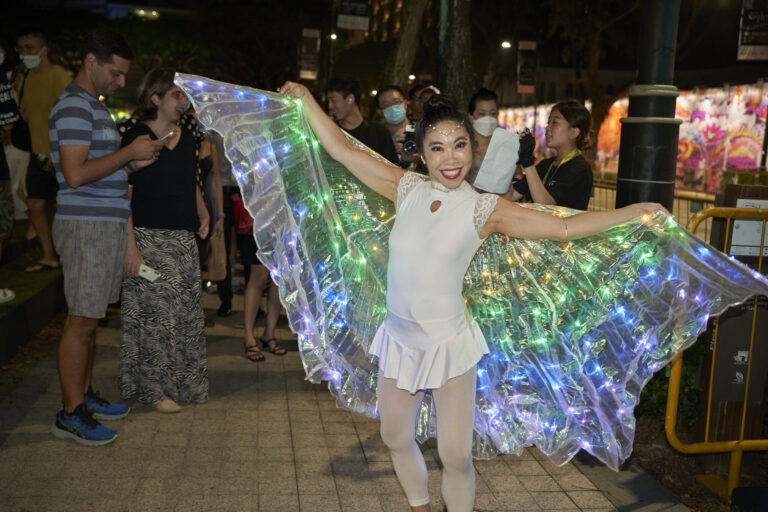Some works of art garner an ecstatic squeal of admiration from me, while others invite me to contemplate. Whether at an art fair or gallery hopping, these reactions are the main reason why I venture out of my cocoon to see contemporary art.
But with public art, there is something extra delightful about this encounter as they present an unsolicited, happy surprise. It is a welcome change during the otherwise mundane or routine commute so many of us start and end our days with.
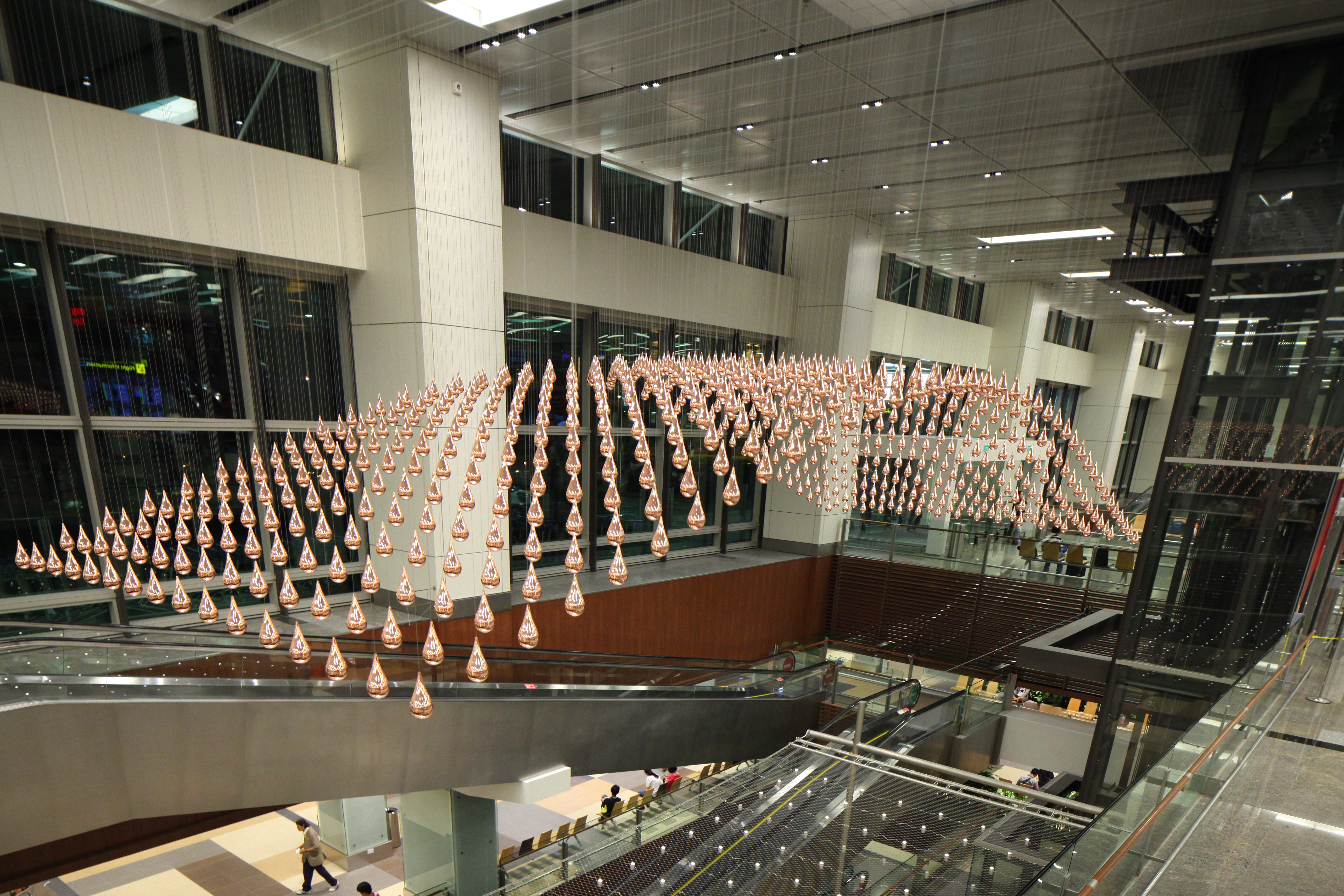
Kinetic Rain is a piece that gets me every time. Situated at Terminal 1 of Changi Airport, it stops me in my tracks whether I am travelling from or arriving at the terminal – or even sending someone off, but not without going into great detail about the piece during their final minutes in Singapore.
The kinetic art sculpture comprises 1,216 individual aluminium ‘droplets’ with a copper coating, all of which are each secured to the airport roof via a wire mechanism and spread out in a uniform grid. The grid is approximately 10 meters at its broadest side, with the wires constantly adjusting their height in a programmed rhythm that brings the droplets to life.
Kinetic sculptures are works with two or three dimensional forms that rely on motion to produce the intended effect. One of the most important American sculptors of the 20th century, Alexander Calder introduced the element of movement in the medium to create iconic hanging sculpture or ‘mobiles’ – a term first prescribed to his work by none other than Marcel Duchamp.
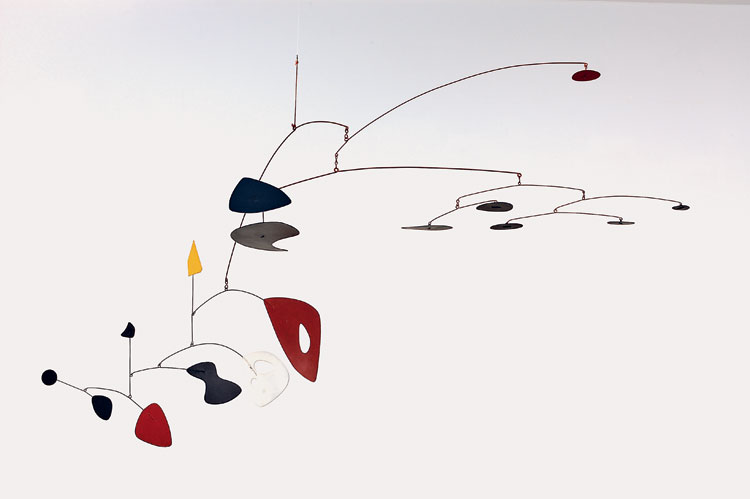
While Calder’s mobiles began in the 1930s, Bridget Riley experimented in the 1960s with geometric shapes and colours for their ability to create illusions of movement to the human eye, despite being completely static 2-dimensional figures. When exploring kinetic sculptures or kinetic art, discussions often involve the likes of both Calder and Riley, artists whose contributions in art history have earned them a permanent place as ‘blue-chip’ by the art market.
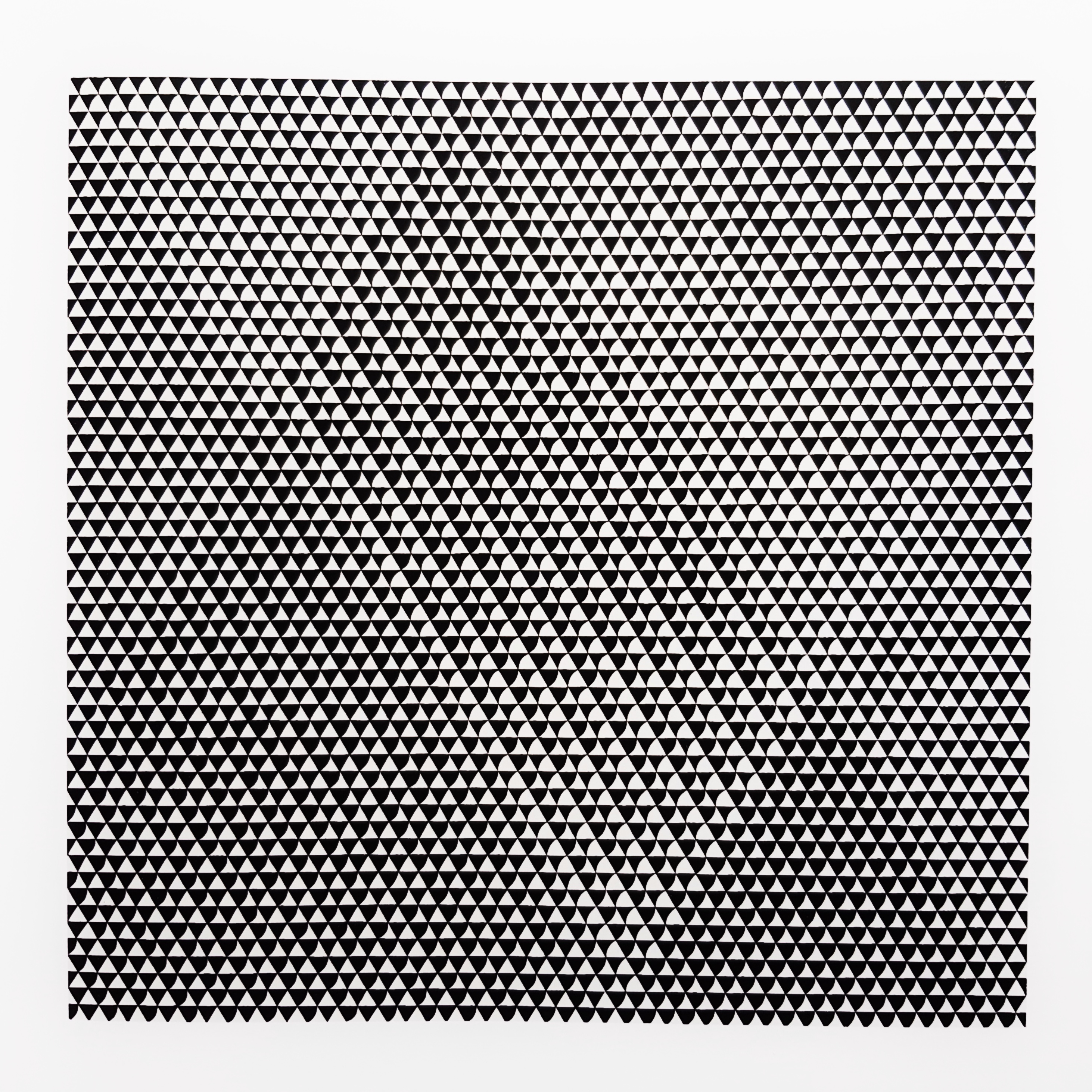
Calder’s mobiles and Riley’s zigzags remain excellent examples…but gosh, have you seen Kinetic Rain?
Conceptualised by the Berlin-based design collective ART+COM studios, the work was commissioned during the 2008 refurbishment of the airport terminal, with the completed sculpture eventually unveiled in 2012.
My fondness for the formal qualities of Kinetic Rain aside, it is a piece that contributes to the age-old debate of whether works of design possess the same capacity to captivate us the way that works of contemporary art do. This is premised on the argument that designers employ a more methodical data-driven process concentrating on functionality, while artists primarily work off instinct. Personally, I find both fields interdependent.
For example, I draw a link between the way these droplets have been designed and Constantin Brancusi’s Bird in Space. The latter is a 135-cm tall slender singular bronze cast. It is polished and perfected by hand, in the likeness of natural models chosen by Brancusi – in this case a bird in flight.
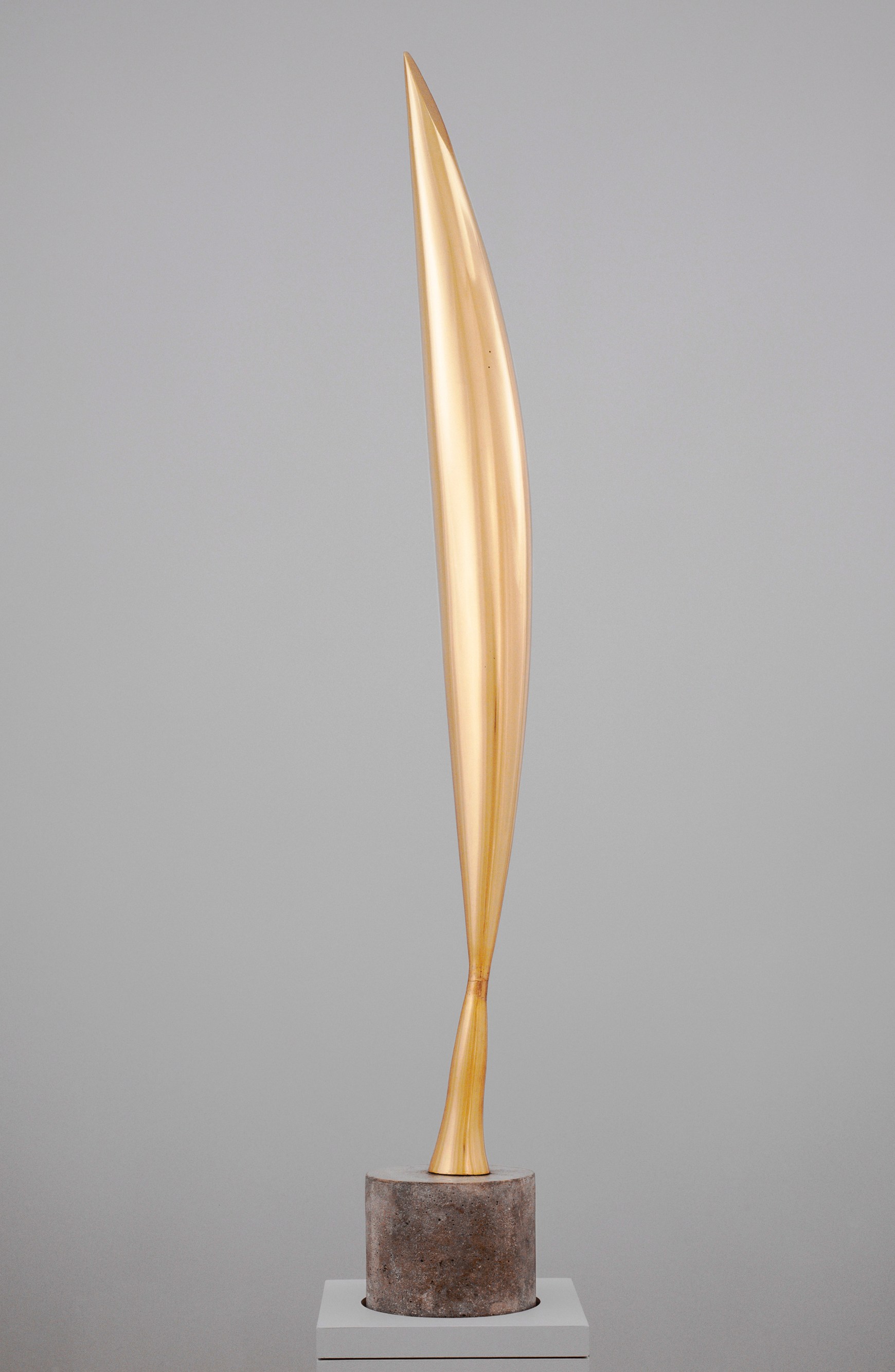
The form that copper is able to take on serves as a reminder that the earth and all its vast minerals are composed of the same things that other worlds beyond ours are made up of. When polished, sculpted and refined, copper is able to communicate the most ethereal qualities far removed from its original earthiness.
Yes that is an intense description, but come on! If you see over a thousand identical droplets dancing together, your sensibilities ought to soar just like mine have since I was an adolescent art lover.
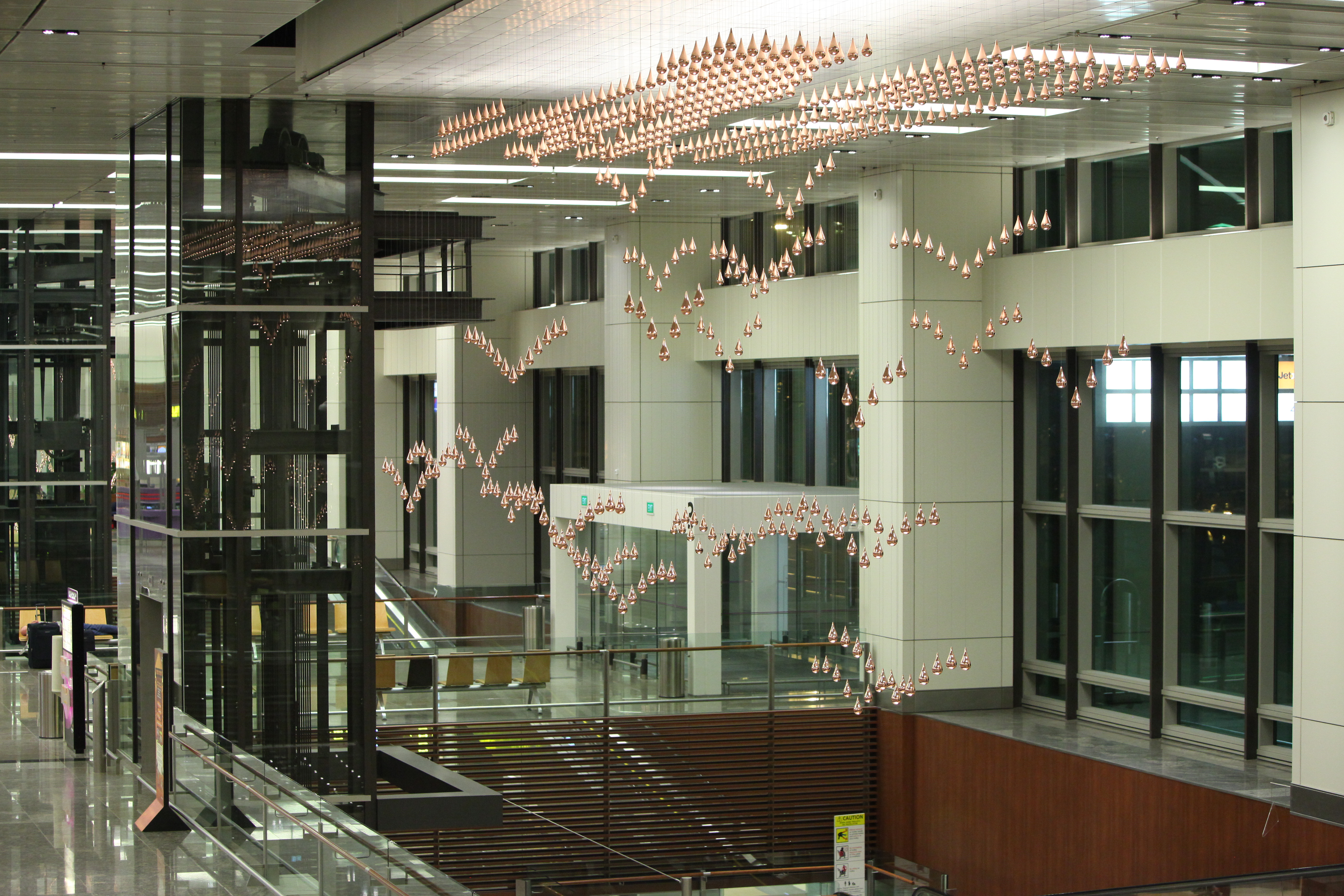
The other aspect I love about Kinetic Rain is the choreography of the droplets. ART+COM programmed a 15 minute choreography for the sculpture during which it takes on different shapes and forms.
For example, there is ‘Hot Air Balloon’ –
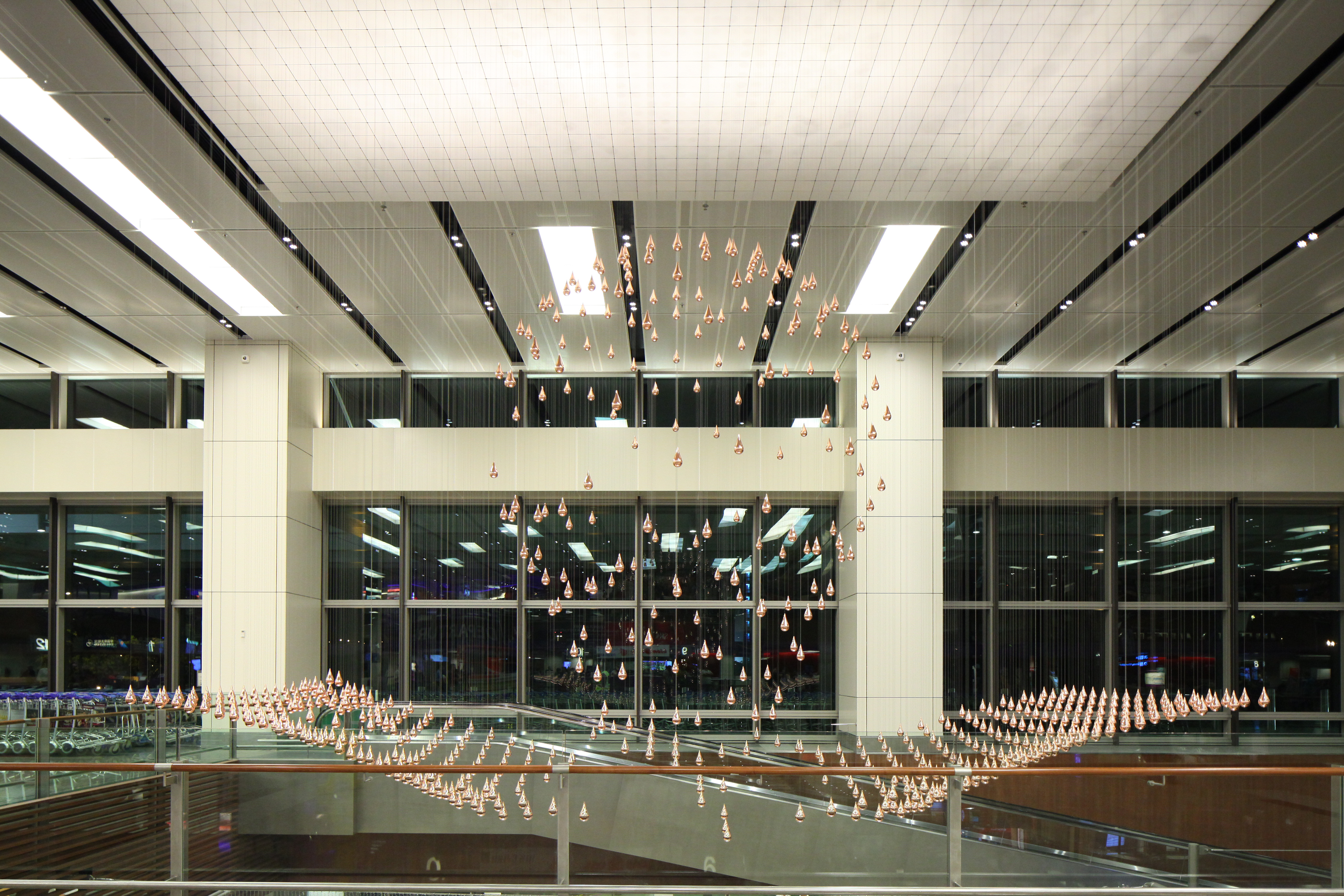
and one of my favourites, the highly pleasing symmetry of ‘Turbulence’ –
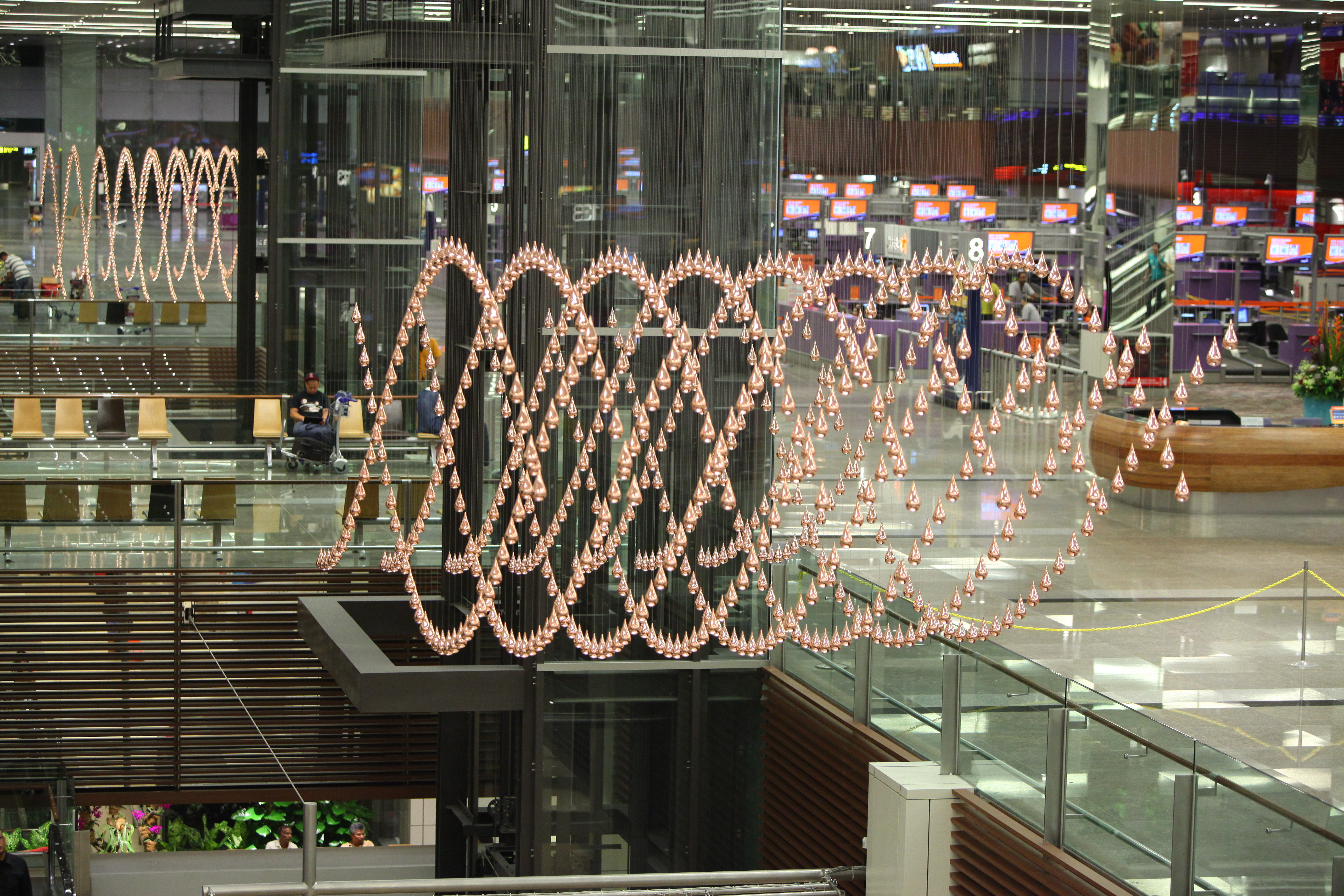
There is an individuality that each droplet embodies when it is in transition, much like the many bodies making their way through the airport that houses this work. Each transition slows into a moment of stillness, before falling in place to form a bigger picture. There is a certain, jolting beauty to the final form that the viewer cannot anticipate when they are all in flux.
Singapore is a country with a penchant for world-class design. By nature, nurture, or a combination of both, this sculpture speaks to my taste for good design in a setting that could only happen here in my island home.
Until recently, Kinetic Rain was Singapore’s largest kinetic sculpture. That accolade now belongs to Petalclouds in the spiffy new Terminal 4 of Changi Airport, which is also designed by the talented folks at ART+COM. That kinetic sculpture comprises 6 ‘clouds’, each with 16 ‘petals’ that are individual aluminium structures suspended from the terminal ceiling and motorised similarly to Kinetic Rain.
Ah! Given how I have characterised my relationship with Kinetic Rain, there are no prizes for guessing what my reaction was when Terminal 4 recently unveiled Petalclouds last year.
Just last month, I had to mentally prepare myself for a draining overnight business flight via T4, but then I chanced upon Petalclouds, and it was like watching a visual rendition of an award-winning symphony that lifted my mood from -.- to ^.^
In proper millennial fashion, I whipped out my phone and Instagram-story-ed Petalclouds with aggressively flamboyant captions. And chances are I will do that again every time I find myself in Terminal 4 – #sorrynotsorry.
